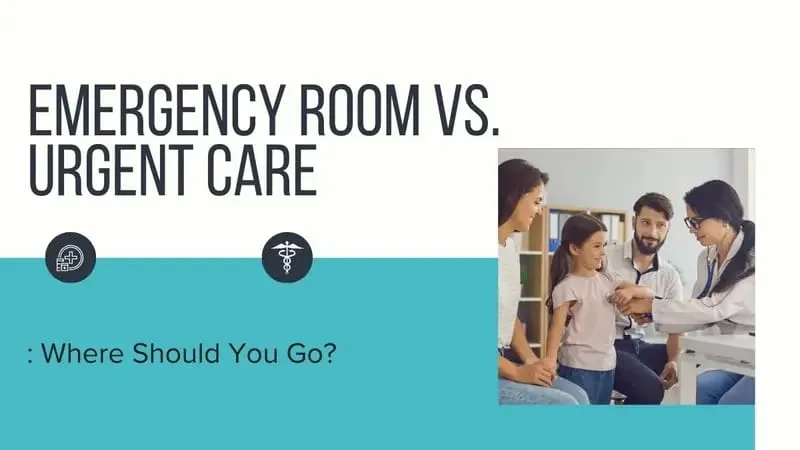In times of sudden illness or unexpected injury, knowing where to seek medical help can make all the difference. Many people hesitate between going to the Emergency Room (ER) or visiting an Urgent Care center, and that hesitation can sometimes delay treatment. Understanding the differences between the two facilities, the nature of your condition, and how each functions can empower you to make informed decisions for your health.
Understanding the Role of the Emergency Room
The Emergency Room is designed for life-threatening conditions and severe medical emergencies. Hospitals staff ERs with physicians, nurses, and specialists equipped with advanced diagnostic tools, operating rooms, and the ability to provide round-the-clock care. Situations such as chest pain, stroke symptoms, major injuries, difficulty breathing, or uncontrolled bleeding require immediate attention at the ER.
Choosing the ER in such critical cases is vital because urgent interventions, such as advanced imaging, blood transfusions, or emergency surgeries, can be lifesaving. While the environment may be crowded and the wait times long due to the prioritization of the most severe cases, the ER remains essential for care in situations where minutes truly matter.
The Purpose of Urgent Care Centers
In comparison, Urgent Care facilities are designed for non-life-threatening concerns that still require timely medical attention. These centers are accessible, often open late hours, and can handle conditions like minor fractures, ear infections, flu symptoms, urinary tract infections, sprains, or small cuts that might need stitches.
The advantage of an Urgent Care center lies in its convenience and affordability. Wait times are usually shorter compared to the ER, and the costs are significantly lower, making them a practical option for many families. With skilled physicians, nurse practitioners, and diagnostic services such as X-rays and lab testing, urgent care fills the critical gap between a primary care doctor’s office and the emergency department.
When to Choose the Emergency Room
Deciding to seek care at the Emergency Room should happen without hesitation if you or a loved one shows signs of:
- Severe chest pain or pressure
- Difficulty breathing or shortness of breath
- Uncontrolled bleeding
- Head injuries with loss of consciousness
- Sudden weakness, slurred speech, or other stroke-like symptoms
- Major trauma such as vehicle accidents or severe burns
These are scenarios where urgent medical attention and immediate access to specialized hospital care are non-negotiable. The ER ensures that the necessary interventions happen at once, often supported by cardiologists, neurologists, trauma surgeons, and other specialists.
When Urgent Care Is the Better Choice
While the ER provides lifesaving support, it’s not the most efficient place for conditions that can be managed safely without advanced hospital interventions. Urgent Care centers are specifically suited for:
- Mild asthma attacks
- Ear and throat infections
- Flu, cold, and fever management
- Minor allergic reactions
- Simple fractures, sprains, and cuts needing stitches
Visiting an Urgent Care for these issues saves both time and money. It also allows hospital staff at the ER to focus on critically ill patients who truly need high-level interventions.
Cost Differences Between ER and Urgent Care
One of the most defining factors between Emergency Rooms and Urgent Care centers is the cost. Emergency room visits commonly come with higher bills because of facility charges, specialist involvement, and advanced diagnostic equipment. On the other hand, urgent care visits are generally a fraction of those costs, making them an appealing option for families managing healthcare expenses.
Insurance providers also encourage patients to use Urgent Care services whenever appropriate, as this reduces the overall strain on hospitals and helps keep healthcare costs manageable systemwide.
Accessibility and Wait Times
Emergency Rooms operate 24/7, accepting patients at any hour, but the volume of patients often leads to significant wait times for non-critical cases. This “triage system” ensures those at risk of losing life or limb receive care first, while less urgent issues may be delayed.
In contrast, Urgent Care facilities are usually open after normal business hours, on weekends, and even on holidays. Their extended availability helps bridge the gap for patients who need care but don’t require the emergency department. This accessibility and faster service make urgent care an attractive alternative for non-emergent cases.
Making the Right Choice for Your Health
Ultimately, the decision boils down to correctly matching your symptoms with the level of treatment required. Think of the Emergency Room as the safeguard for severe, dangerous situations, while Urgent Care is the convenient solution for common illnesses or injuries that need swift but not hospital-level treatment.
It’s also worth noting that if you are ever unsure, it is better to err on the side of caution and head to the ER. Calling emergency services in such situations guarantees expert evaluation and prevents unnecessary delays that might worsen a condition.
Final Thoughts
Both the Emergency Room and Urgent Care centers play critical roles in the healthcare system. Understanding when to choose one over the other ensures appropriate care, saves time, and reduces costs. As healthcare needs evolve, being informed about your choices is one of the most effective steps you can take to safeguard your health and the well-being of those around you.
Disclaimer: This article is intended for informational purposes only and should not be taken as medical advice. If you are facing a critical health emergency, always call emergency services or visit the nearest Emergency Room immediately.



